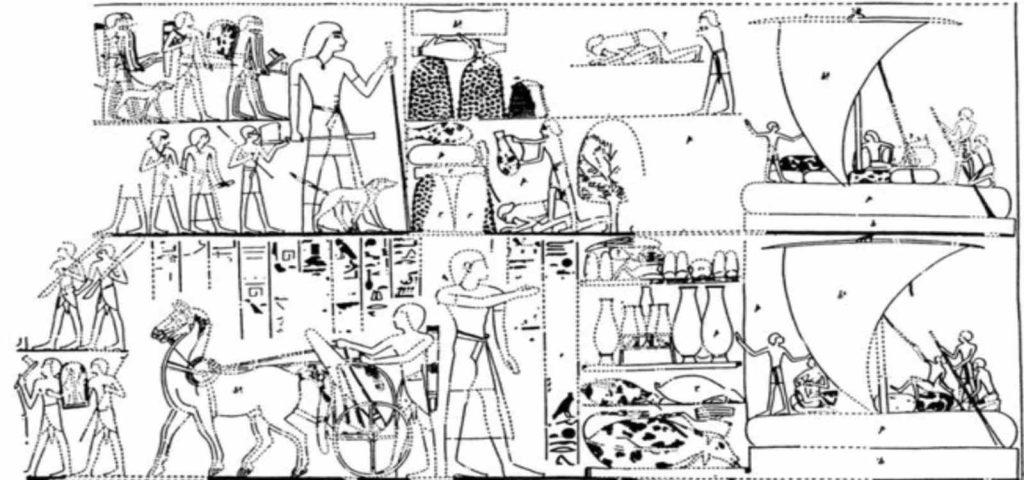The land of Punt is a geographic area and place that is found in old Egyptian texts. Archaeologists continue to find Punt the mysterious “land of plenty,” a fascinating riddle.
Back then, the ancient Egyptians adored it for its wonderful riches. It was produced and sold to ancient Egyptians. It had all the luxury goods such as myrrh, frankincense electrum, and leopard skin.
Punt’s Modern-Day Location
Historians have always been fascinated by the mystery surrounding its actual location. The ancient Egyptians were Punt’s trade partners for over a thousand years. Still, they never revealed Punt’s precise location.
Alt: An image of Punt Pyramids
Title: Punt Pyramids
What we have is just some unclear tales of expeditions around the modern Red Sea. That might refer to any region or country. This just tells us the Punt could have been in different places. It could have been in present-day Yemen, Somalia, and Southern Sudan.
Adulis Unveils the Secrets of Ancient Punt
A recently published paper in the journal eLife suggests that Punt could have been the same as another mythical harbor city in modern-day Eritrea. Back in the day, the Romans called this city Adulis.
This suggestion comes from a genetic examination of a mummified baboon in the Late Period of ancient Egypt, from 800 to 500 BCE. Based on its genetic makeup, the animal most likely evolved around the location where Adulis is said to have existed many years later.
The Palmero Stone Reference
The first records, reference, and mentions of Punt comes from the Palmero Stone. Palmero Stone is one of the seven fragments that made up an inscription tablet bearing the royal chronicles of ancient Egyptian dynasties from the earliest to the middle of the Fifth Dynasty.
The stone claims that a very successful journey to Punt occurred during King Sahure’s reign in 2450 BCE. The trip brought back roughly 80,000 measures of myrrh, 6,000 measures of electrum, and an equivalent amount of wood and enslaved people.
Hatshepsut’s Journey to Punt
The mortuary temple of Queen Hatshepsut, the premier female pharaoh, at Deir el-Bahari holds the most elaborate representations of Punt. Hatshepsut’s journey to Punt in 1493 BCE was seen as politically and spiritually important since it seemed that the ancient Egyptians had lost their link to “God’s Land.”
Some stone reliefs had images of Hatshepsut’s ships reaching a mystery place, a settlement of stilt-built beehive-shaped homes, exotic plants and animals, and the journey back.
The Last Official Journey to Punt
The last documented trip to Punt took place under Ramses II (Ramses the Great) in the twelfth century BCE. A papyrus that has survived recounts ships that may have been carrying merchandise going down the Red Sea to Punt.
However, it doesn’t specifically state how long these trips took or where the ancient Egyptians traveled, much like all other historical references.
Baboon Isotopes Trace Make Details Lost
Researchers studying radioactive strontium and oxygen isotopes in the mummified remains of baboons from the New Kingdom (1550–1069 BCE) and Ptolemaic period (305–330 BCE) analyzed in 2020 under the direction of Dartmouth College anthropologist Nathaniel Dominy.
After relating the isotopic signatures to the roughly located regions, Dominy and associates found that a few of the animals were not indigenous to Egypt and most likely came from the regions of Ethiopia, Djibouti, Somalia, and Eritrea.
More Details Baboon’s Journey from Luxor
The discovery helped give German evolutionary scientist Gisela Kopp of the University of Konstanz additional leads. Dominy was part of the team that examined the mummified baboon’s mitochondrial DNA in the recently published research.
The baboon was first unearthed in 1905 in Egypt’s Valley of the Monkeys. The Valley of Monkeys is on the western bank of the Nile River in Luxor.
Baboon’s Mitochondrial DNA
The female baboon was part of the 14 specimens that originated from the Musée des Confluences in France. The animal dates back to between 800 and 500 BCE. It is challenging to recover mitochondrial DNA from old bones.
Over time, genetic material deteriorates, and environmental bacteria may cross-contaminate it. The female baboon was the only specimen whose DNA was sufficiently intact to be examined.
Adulis Connection with Punt
The discovery by Dominy and Kopp makes some speculations about Punt’s location. They observe that the specimen originated around the site of the area of the port city of Adulis.
It was once a part of the Aksumite Empire. This Aksumite Empire is located in modern-day Eritrea. Dominy and Kopp speculate that the same port could have formerly been Punt.
Adulis and the Puzzling Punt Connection
According to Dominy, the mummies the team researched are older than the first mention of Adulis. The earliest mention of Adulis goes as far back as the early Ptolemaic times, in the third century BCE. Adulis must have existed many hundred years before its first recorded existence.
Adulis was likely a heavily urbanized state with a sophisticated port and architecture at that time. Punt is not even quite like that in stories or images from the ancient Egyptians.
Punt’s Location Remains Unknown
This still keeps Punt’s location a mystery. Dominy and Kopp agree that comparing Punt to Adulis is very bold. However, they hope that their audacity will serve as a guide for present and future archaeological studies at Adulis and elsewhere in the area.
It also offers insights into the ways in which human trade altered wildlife diversity, how commerce sparked the development of ancient Egyptian marine technology, or why the ancient Egyptians respected baboons.
